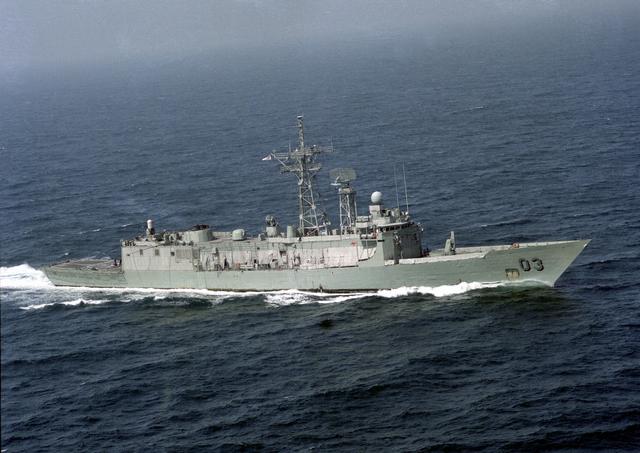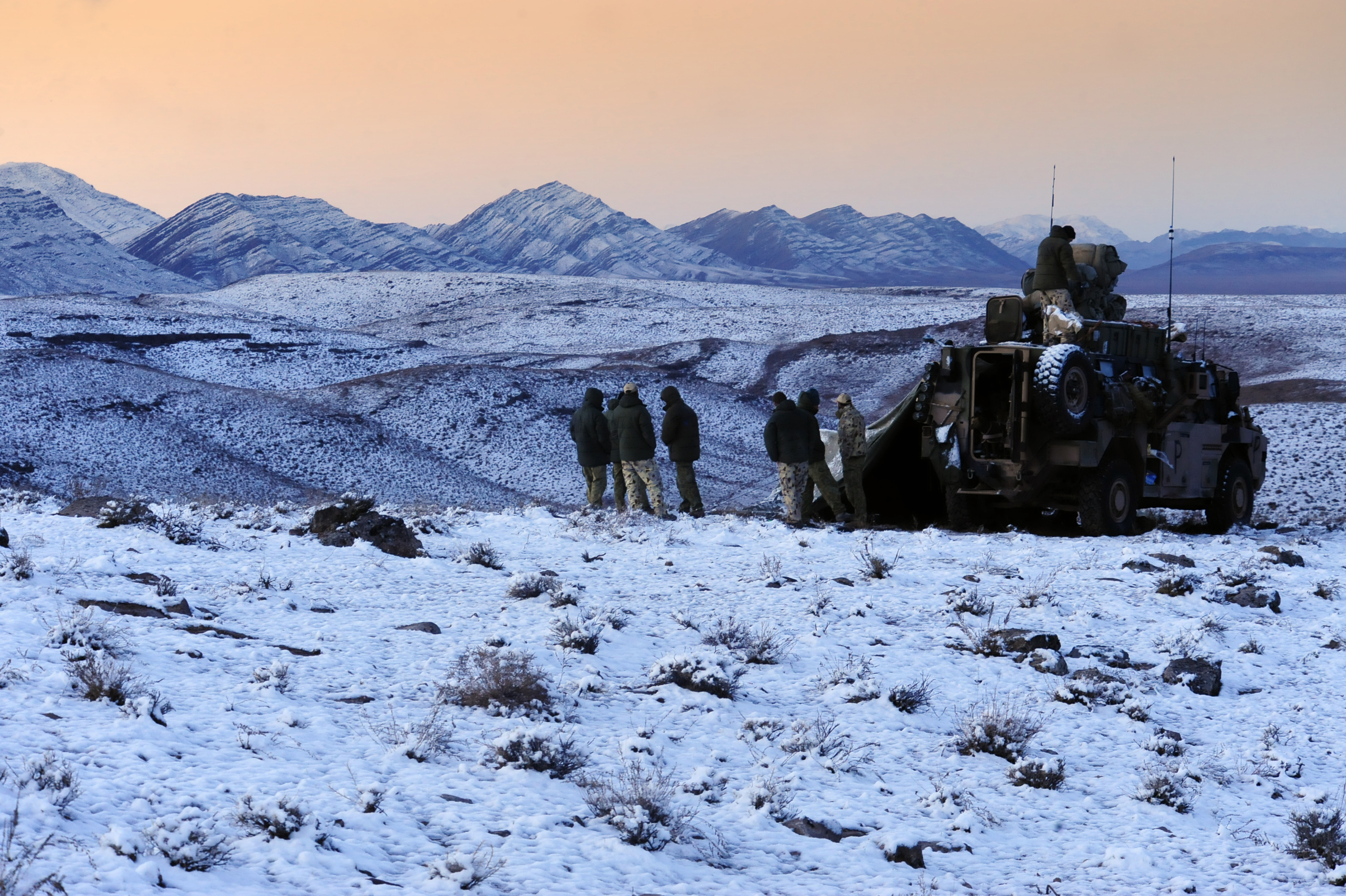|
Stephen Meredith
Air Vice Marshal Stephen Leslie Meredith, is a senior officer in the Royal Australian Air Force (RAAF). He joined the RAAF as a navigator in 1986. He has commanded No. 6 Squadron RAAF (2006–08), No. 42 Wing RAAF (2008–10), the Aerospace Operational Support Group RAAF (2014–16) and the Combined Air Operations Centre (2017), and has served on operations in the Gulf War, War in Afghanistan and in the International military intervention against ISIL. He served as Head Force Integration from 2017 to 2019, before being appointed Deputy Chief of Air Force in July 2019. RAAF career Meredith joined the Royal Australian Air Force (RAAF) as an officer cadet in 1986 and trained as a navigator. On the completion of his training, he was posted to No. 37 Squadron RAAF at RAAF Base Richmond, serving aboard Lockheed C-130 Hercules transport aircraft. In December 1990, Meredith was among a detachment from No. 37 Squadron deployed in support of Australia's contribution to the Gulf War. Fo ... [...More Info...] [...Related Items...] OR: [Wikipedia] [Google] [Baidu] |
Royal Australian Air Force
"Through Adversity to the Stars" , colours = , colours_label = , march = , mascot = , anniversaries = RAAF Anniversary Commemoration – 31 March , equipment = , equipment_label = , battles = * Second World War * Berlin Airlift * Korean War * Malayan Emergency * Indonesia–Malaysia Confrontation * Vietnam War * Operation Astute, East Timor * War in Afghanistan (2001–present), War in Afghanistan * Iraq War * American-led intervention in Iraq (2014–present), Military intervention against ISIL , decorations = , battle_honours = , battle_honours_label = , flying_hours = , website = , commander1 = Governor-General of Australia, Governor-General David Hurley as representative of Charles III as Monarchy ... [...More Info...] [...Related Items...] OR: [Wikipedia] [Google] [Baidu] |
Australian Contribution To The 1991 Gulf War
Australia was a member of the international coalition which contributed military forces to the 1991 Gulf War, also known as Operation Desert Storm. More than 1,800 Australian Defence Force (ADF) personnel were deployed to the Persian Gulf from August 1990 to September 1991, while contingents from the Royal Australian Navy circulated through the region in support of the sanctions against Iraq until November 2001. In August 1990, two frigates HMAS ''Adelaide'' and HMAS ''Darwin'' and the replenishment ship HMAS ''Success'' left for the Persian Gulf. HMAS ''Success'' had no air defences, so the Army 16th Air Defence Regiment was embarked. On 3 December 1990, HMAS ''Brisbane'' and HMAS ''Sydney'' (IV) relieved HMAS ''Adelaide'' and HMAS ''Darwin''. On 26 January 1991, HMAS ''Westralia'' replaced HMAS ''Success''. A Navy clearance diving team was also deployed for explosive ordnance disposal and demolition tasks. Australian ships were in danger of sea mines and possible air att ... [...More Info...] [...Related Items...] OR: [Wikipedia] [Google] [Baidu] |
Australian Defence College
The Australian Defence College (ADC) comprises three joint education and training organisations operated by the Australian Defence Force in Canberra, Australian Capital Territory: * the War College, * the Australian Defence Force Training Centre (ADFTC), and * the Australian Defence Force Academy (ADFA). The ADC is commanded by a two-star officer, currently Major General Mick Ryan since January 2018. Each of the educational organisations is commanded by a one-star officer or Colonel (equivalent), titled Commandant of their organisation. In 2019, the Australian Defence College implemented its biggest organisational reform in almost two decades. The changes included the amalgamation of the Centre for Defence and Strategic Studies and the Australian Command and Staff College to form the Australian War College, to focus on Joint Professional Military Education. Individual training delivered by the Australian Defence Force Warfare Training Centre, Peace Operations Training Centr ... [...More Info...] [...Related Items...] OR: [Wikipedia] [Google] [Baidu] |
Chief Of The Defence Force (Australia)
The Chief of the Defence Force (CDF) is the highest-ranking and most senior military officer in the Australian Defence Force (ADF) and is the principal military advisor to the National Security Committee and the Minister for Defence. The current Chief of the Defence Force is General Angus Campbell, who took office on 6 July 2018. Responsibilities The CDF commands the ADF under the direction of the Minister for Defence and provides advice on matters that relate to military activity, including military operations. In a diarchy, the CDF serves as co-chairman of the Defence Committee, conjointly with the Secretary of Defence, in the command and control of the Australian Defence Organisation. The CDF is the Australian equivalent position of what in NATO and the European Union is known as the Chief of Defence, in the United Kingdom is known as the Chief of the Defence Staff, and in the United States is known as the Chairman of the Joint Chiefs of Staff, although with the ... [...More Info...] [...Related Items...] OR: [Wikipedia] [Google] [Baidu] |
Operation Slipper
The Australian contribution to the war in Afghanistan has been known as Operation Slipper (2001–2014) and Operation Highroad (2015-2021). Australian Defence Force (ADF) operations and the size of the forces deployed have varied and ADF involvement has included two major areas of activity: Afghanistan and the Persian Gulf. These activities have seen the deployment of naval, air and land forces that have taken part in combat and combat support operations as part of the International Security Assistance Force (ISAF). In mid-2014, the naval and logistic support operations in the Persian Gulf were re-designated as Operation Manitou and Operation Accordion respectively. Operation Slipper Operation Slipper began in late 2001 and ended on 31 December 2014. First phase During the first phase of Operation Slipper, the Australian Defence Force (ADF) commitment to Afghanistan consisted of a Special Forces Task Group and two Royal Australian Air Force (RAAF) Boeing 707 air-to-air r ... [...More Info...] [...Related Items...] OR: [Wikipedia] [Google] [Baidu] |
Boeing 737 AEW&C
The Boeing 737 AEW&C is a twin-engine airborne early warning and control aircraft based on the Boeing 737 Next Generation design. It is lighter than the 707-based Boeing E-3 Sentry, and has a fixed, active electronically scanned array radar antenna instead of a rotating one. It was designed for the Royal Australian Air Force (RAAF) under "Project Wedgetail" and designated E-7A Wedgetail. The 737 AEW&C has also been selected by the Turkish Air Force (under "Project Peace Eagle", Turkish: ''Barış Kartalı'', designated ''E-7T'', the Republic of Korea Air Force ("Project Peace Eye", Korean: "피스 아이"), and the United Kingdom (designated Wedgetail AEW1). In April 2022, the United States Air Force announced that the AEW&C will be replacing the E-3 beginning in 2027. Design and development The Australian Department of Defence evaluated industry proposals for airborne surveillance and early warning systems as early as 1986. Further studies led to the approval of the first ... [...More Info...] [...Related Items...] OR: [Wikipedia] [Google] [Baidu] |
Group Captain
Group captain is a senior commissioned rank in the Royal Air Force, where it originated, as well as the air forces of many countries that have historical British influence. It is sometimes used as the English translation of an equivalent rank in countries which have a non-British air force-specific rank structure. Group captain has a NATO rank code of OF-5, meaning that it ranks above wing commander and immediately below air commodore, and is the equivalent of the rank of captain in the navy and of the rank of colonel in other services. It is usually abbreviated Gp Capt. In some air forces (such as the RAF, IAF and PAF), the abbreviation GPCAPT is used; in others (such as the RAAF and RNZAF), and in many historical contexts, the abbreviation G/C is used. The full phrase “group captain” is always used; the rank is never abbreviated to "captain". RAF usage ;History On 1 April 1918, the newly created RAF adopted its officer rank titles from the British Army, with Royal ... [...More Info...] [...Related Items...] OR: [Wikipedia] [Google] [Baidu] |
Wing Commander (rank)
Wing commander (Wg Cdr in the RAF, the IAF, and the PAF, WGCDR in the RNZAF and RAAF, formerly sometimes W/C in all services) is a senior commissioned rank in the British Royal Air Force and air forces of many countries which have historical British influence, including many Commonwealth countries but not including Canada (since Unification) and South Africa. It is sometimes used as the English translation of an equivalent rank in countries which have a non-English air force-specific rank structure. It ranks immediately above squadron leader and immediately below group captain. It has a NATO ranking code of OF-4. It is equivalent to commander in the Royal and United States Navies, as well as to lieutenant colonel in the British Army, the Royal Marines, and the United States Army, Air Force and Marine Corps. The equivalent rank in the Women's Auxiliary Air Force and the Women's Royal Air Force (until 1968) and in Princess Mary's Royal Air Force Nursing Service (until 1980) ... [...More Info...] [...Related Items...] OR: [Wikipedia] [Google] [Baidu] |
Australian Command And Staff College
The Australian Defence College (ADC) comprises three joint education and training organisations operated by the Australian Defence Force in Canberra, Australian Capital Territory: * the War College, * the Australian Defence Force Training Centre (ADFTC), and * the Australian Defence Force Academy (ADFA). The ADC is commanded by a Military rank, two-star Officer (armed forces), officer, currently Major General Mick Ryan (general), Mick Ryan since January 2018. Each of the educational organisations is commanded by a one-star officer or Colonel (equivalent), titled Commandant of their organisation. In 2019, the Australian Defence College implemented its biggest organisational reform in almost two decades. The changes included the amalgamation of the Centre for Defence and Strategic Studies and the Australian Command and Staff College to form the Australian War College, to focus on Joint Professional Military Education. Individual training delivered by the Australian Defence Forc ... [...More Info...] [...Related Items...] OR: [Wikipedia] [Google] [Baidu] |
Executive Officer
An executive officer is a person who is principally responsible for leading all or part of an organization, although the exact nature of the role varies depending on the organization. In many militaries and police forces, an executive officer, or "XO", is the second-in-command, reporting to the commanding officer. The XO is typically responsible for the management of day-to-day activities, freeing the commander to concentrate on strategy and planning the unit's next move. Administrative law While there is no clear line between principal executive officers and inferior executive officers, principal officers are high-level officials in the executive branch of U.S. government such as department heads of independent agencies. In ''Humphrey's Executor v. United States'', 295 U.S. 602 (1935), the Court distinguished between executive officers and quasi-legislative or quasi-judicial officers by stating that the former serve at the pleasure of the president and may be removed at their di ... [...More Info...] [...Related Items...] OR: [Wikipedia] [Google] [Baidu] |
Defence Material Organisation
The Capability Acquisition and Sustainment Group (CASG) is an organisation within the Australian Department of Defence, responsible for acquisition and supply chain management of military equipment and materiel including aircraft, ships, vehicles, electronic systems, uniforms and rations for the Australian Defence Force. CASG employs more than 7000 military, civilian and contracted staff in more than 70 locations around Australia and internationally. CASG was established in June 2015 after the Defence Materiel Organisation was disbanded after recommendations from the First Principles Review. History left, Logo of the former Defence Materiel Organisation (2000–2015) The Defence Materiel Organisation was formed in 2000 when the then Defence Acquisition Organisation merged with Support Command Australia, bringing together the Department of Defence's capital acquisition and logistics organisations into a single entity. The DMO was given responsibility for purchasing, through-l ... [...More Info...] [...Related Items...] OR: [Wikipedia] [Google] [Baidu] |


